Succession to the Crown: King William III and Queen Mary II

As the official public record since 1665, The Gazette has been recording successions to the Crown for over three centuries. As part of our ‘Succession to the Crown’ series, historian Russell Malloch looks through the archives at the accession and reign of King William III and Queen Mary II, as described in The Gazette.
Chapters
Succession to the Crown paperback
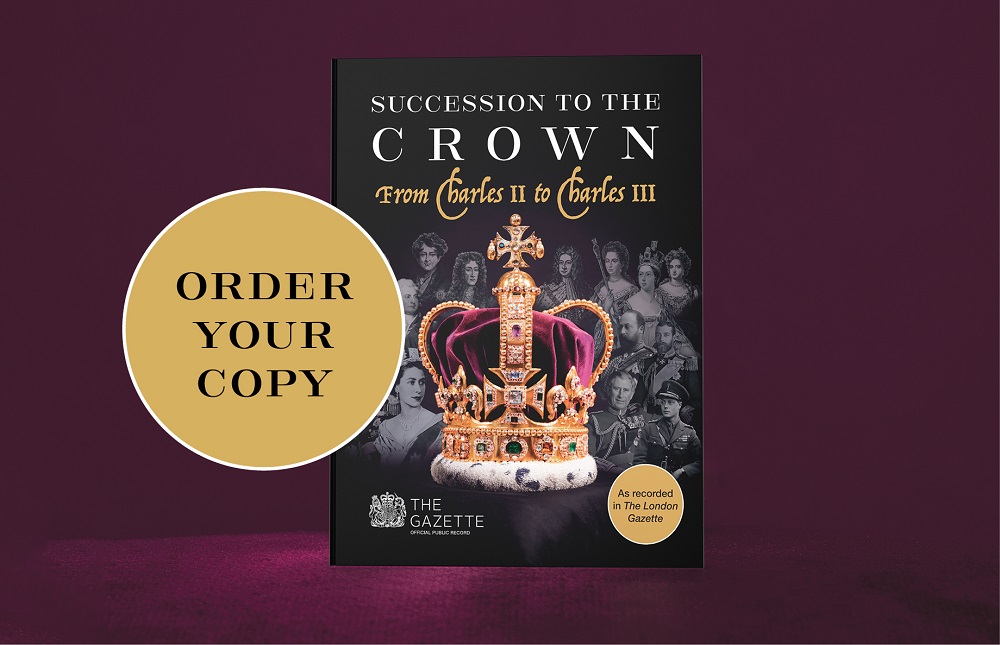
To celebrate the new king’s coronation, The Gazette’s Succession to the Crown series has been released in paperback.
Available to order now from the TSO Shop, the Succession to the Crown paperback explores the coronations, honours and emblems of the British monarchy, and includes an exclusive chapter on the accession of King Charles III.
Find out more in the link below.
The House of Orange
The fate of the Crown, rather than the business of any accession council, became the main issue that was of interest to the nation after King James left for France at the end of 1688.
The succession process could not be completed using the method that had worked in 1685 when the imperial crowns of England, Scotland and Ireland had passed to the Duke of York on his brother’s death. Instead, the events of 1688-89 provide one of only two examples of The Gazette reporting a transfer of the royal authority that was not caused by the death of the previous monarch (the second being the abdication of Edward VIII in 1936 (Gazette issue 34349)).
The Gazette recorded the developments in the three kingdoms that led to the assumption of the crowns by the Prince and Princess of Orange, who were James’s son-in-law and daughter, as well as the scheme under which the royal authority was shared for the first time since the House of Stewart gained the crowns of England and Ireland in 1603.
The process of stabilising the English administration began on 11 December 1688 when the peers and bishops who were “in and about the cities of London and Westminster” assembled at Guildhall and declared that they were “heartily and zealously concerned for the Protestant religion, the laws of the land, and the liberties and properties of the subject” and resolved to assist the Prince of Orange in obtaining a free parliament.
The Guildhall assembly said they would preserve the peace of “these great and populous cities of London and Westminster, and the parts adjacent, by taking care to disarm all Papists, and secure all Jesuits and Romish priests who are in or about the same” (Gazette issue 2409).
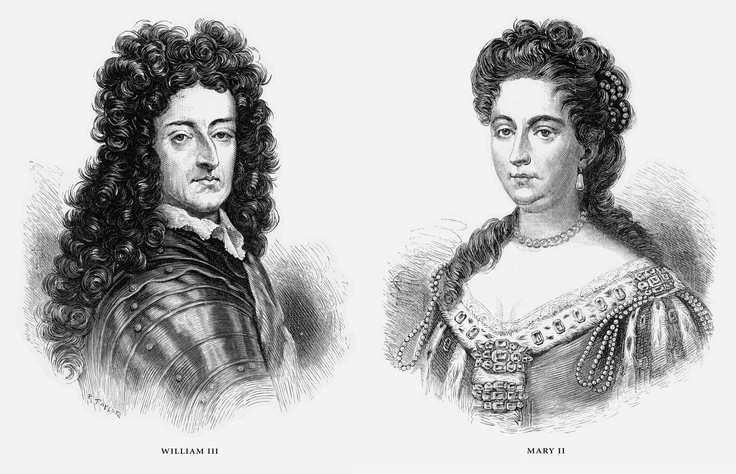
Westminster convention
A convention of public figures met at Westminster in late January 1689 and determined that the Prince and Princess of Orange were now the king and queen of England, France and Ireland “with all the dominions and territories thereunto belonging”. William and Mary accepted the convention’s offer of the crowns at the Banqueting House on 13 February 1689, and their accession was proclaimed in London by the officers of arms in the customary manner (Gazette issue 2427). The Gazette contained no report of any accession council being held to confirm their royal styles and titles.
As regards changes to the content of The Gazette, the Prince of Orange brought no new honours or other forms of royal favour from Holland that he could use in England and report in The Gazette, and meanwhile the Garter and the other English honours were allowed to function as before.
In line with precedent, and even before his status in Scotland was settled or he received the golden spurs to affirm his role as the fountain of honour, King William decided to exercise his royal authority (Gazette issue 2444), and in April 1689 presented the Garter’s insignia to “Duke Frederick, Mareshal de Schomberg, general of His Majesty’s forces, and master-general of the Ordnance” the German-born soldier who fell at the Battle of the Boyne in the summer of 1690 (Gazette issue 2441).
The House of Lords retained its role in the parliamentary system under the Prince of Orange, and in April 1689 The Gazette reported the award of several peerages, including the dukedom of Cumberland for the King’s brother-in-law, Prince George of Denmark, and an earldom for John Churchill, whose services against King James in Ireland and with allied armies on the Continent made him the most celebrated English soldier of his day (Gazette issue 2443).

Edinburgh offer
Churchill’s latest step in the peerage was reported at the same time The Gazette described the proceedings of the estates in Edinburgh, the public body that settled the destination of the crown of Scotland.
On 4 April 1689 the estates declared that King James had assumed the regal power without taking the oath required by law and had “by the advice of evil and wicked counsellors, invaded the fundamental constitution of this kingdom, and altered it from a legal and limited monarchy, to an arbitrary despotick power... whereby he hath forfeited the right of the Crown, and the throne is become vacant.” The assembly then ordered that legislation should be brought forward to settle the Scottish crown on the King and Queen of England.
Commissioners were sent to London, where William and Mary accepted the offer of the crown and took the Scottish coronation oath at the Banqueting House on 11 May 1689 (Gazette issue 2453). There was no separate Scottish accession council or coronation, and in practice William and Mary made no use of the most distinctive Scottish honour, the Order of the Thistle.

King and Queen
The Gazette notices show that it was William rather than Mary who exercised the royal authority, and that it was he who assented to acts of the English Parliament, issued royal proclamations, conferred knighthoods, and invested the knights of the Garter.
The status of the royal couple in England and Ireland was determined by the Westminster Parliament in “an act for declaring the rights and liberties of the subject, and settling the succession of the Crown” which received assent on 16 December 1689 (Gazette issue 2515), and is often known as the Bill of Rights.
The statute provided that William and Mary possessed “all honours, stiles, titles, regalities, prerogatives, powers, jurisdictions and authorities” that belonged to the Crown, but did not specify the nature of those prerogatives and powers. It was clear, however, that they covered matters such as the sovereignty of the Garter, and the right to create peers, baronets and knights.
The act determined that the Crown should remain with William and Mary during their lives and then pass to any survivor, but that “the full exercise of the regal power and government be only in, and executed by” the King. After their death the Crown was to pass to the heirs of Queen Mary’s body, which failing to her sister Princess Anne of Denmark, and so on.
The act reflected the religious context in which the Crown operated during the late 17th century and prescribed the declaration that had to be made by the sovereign at the first meeting of Parliament after coming to the throne. The law still requires that a statement is made in Parliament, and so Queen Elizabeth made a modified form of declaration in the House of Lords on 4 November 1952:
“I, Elizabeth, do solemnly and sincerely in the presence of God profess, testify, and declare that I am a faithful Protestant, and that I will, according to the true intent of the enactments which secure the Protestant succession to the throne, uphold and maintain the said enactments to the best of my powers according to law.”
The Bill of Rights may have given Queen Mary a limited role in exercising the royal authority, but her effigy and cypher were introduced into the coinage along with those of her husband, and her portrait and titles appeared in the great seal. The status of the House of Orange was not reflected in the regal titles, but William’s Dutch coat of arms was added to the centre of the British shield, and so featured in the seals and coins of the reign.
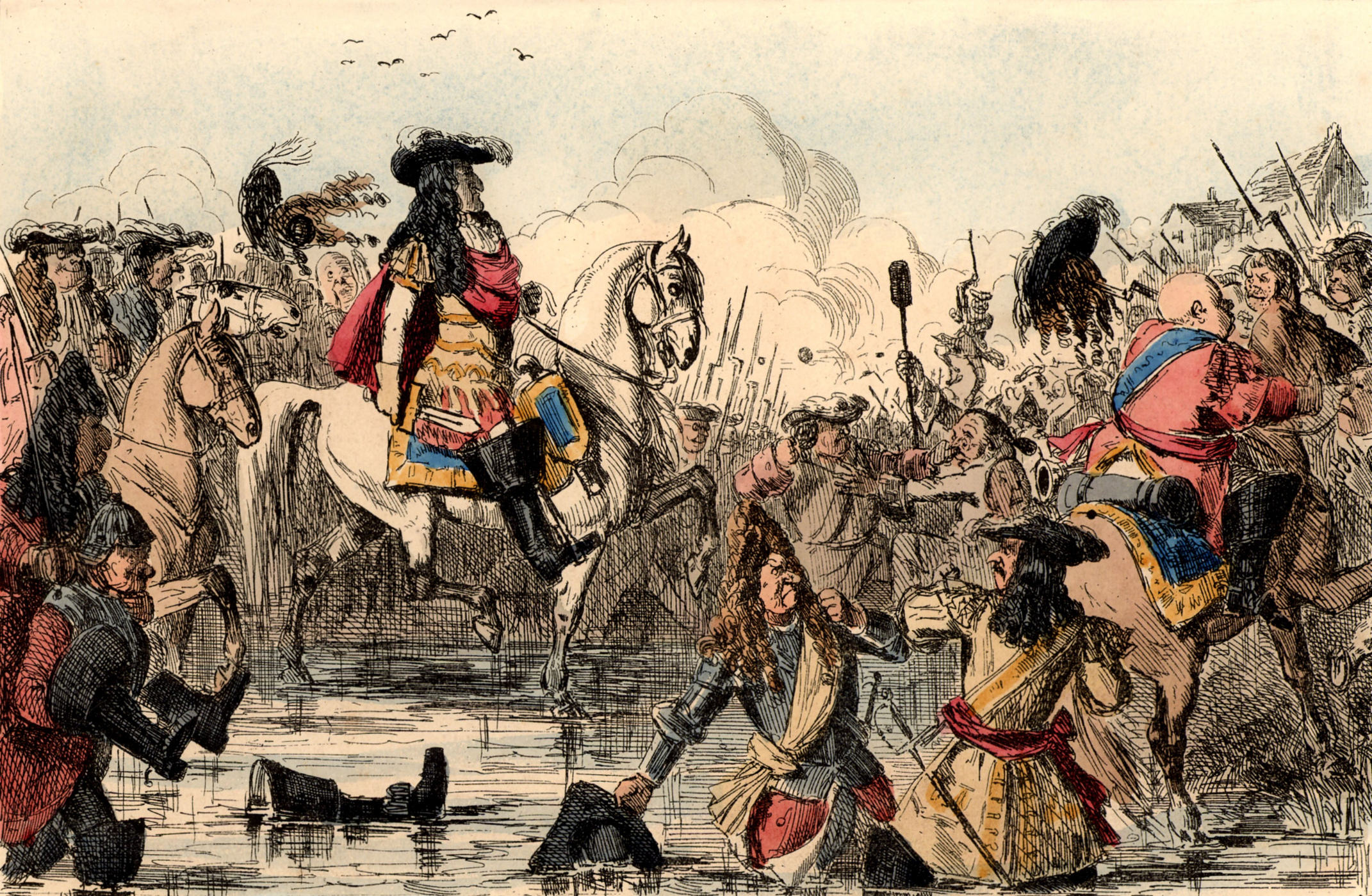
Absent the realm
Queen Mary gained a more prominent place in government during her husband’s regular absences from England. William’s first departure related to the campaign against forces that sought to regain power for King James. In March 1690 the King advised the Westminster parliament that “finding my presence in Ireland will be absolutely necessary for the more speedy reducing of that kingdom, I continue my resolution of going thither as soon as may be” and that he “thought it most convenient to leave the administration of the government in the hands of the Queen during my absence” (Gazette issue 2542).
Parliament legislated to deal with this situation, and in May assent was given to “An act for the exercise of the government by Her Majesty during His Majesties absence” (Gazette issue 2559). The Gazette did not explain the nature or duration of the powers that passed to the Queen, and in practice she approved no grant of royal favours during the Irish campaign or any of his later absences.
King William landed at Carrickfergus in June 1690 and initially directed the war against the Jacobite forces in Ireland, which led to The Gazette publishing several reports about the operations, including the victory of the allied forces near the River Boyne (Gazette issue 2570). He then left the conduct of the campaign to his generals, and returned to England in September 1690.
William sailed from the realm several times after that, but on trips to Europe rather than Ireland, and in particular to manage his affairs in Holland. He went overseas twice during 1691, leaving the Queen to exercise the royal authority for several months from January through to October. The Gazette did not record her using any regal powers, but reported some of the King’s movements, including his presence at an investiture at The Hague when the Duke of Zelle (the father-in-law of King George I) was made a knight of the Garter.
The Gazette also announced the King’s departures in March of 1692 and 1693, and in May of 1694, and included reports about his embarkation at Gravesend or Harwich, as well as his landing in England in the following October or November.
The King’s return was sometimes celebrated with a public thanksgiving, and the delivery of formal addresses. Such an address was given by the lord mayor and corporation of London in November 1694, when they congratulated William on his safe return and “the prosperous state of his Majesties affairs both by sea and land”, after which the King knighted the city’s sheriffs, John Sweetapple and William Cole (Gazette issue 3027). Later that day the lord mayor attended the Queen “with great expressions of thanks to Her Majesty for her wise and prosperous administration of the Government during His Majesties absence, to the honour of these kingdoms, and the entire satisfaction of all their Majesties good and faithful subjects.”
A few weeks after Sheriffs Sweetapple and Cole were knighted, London learned that it could no longer rely on the Queen’s “wise and prosperous administration”, as she died at Kensington Palace on 28 December 1694, and so the King’s ability to delegate matters to his wife came to an abrupt end.
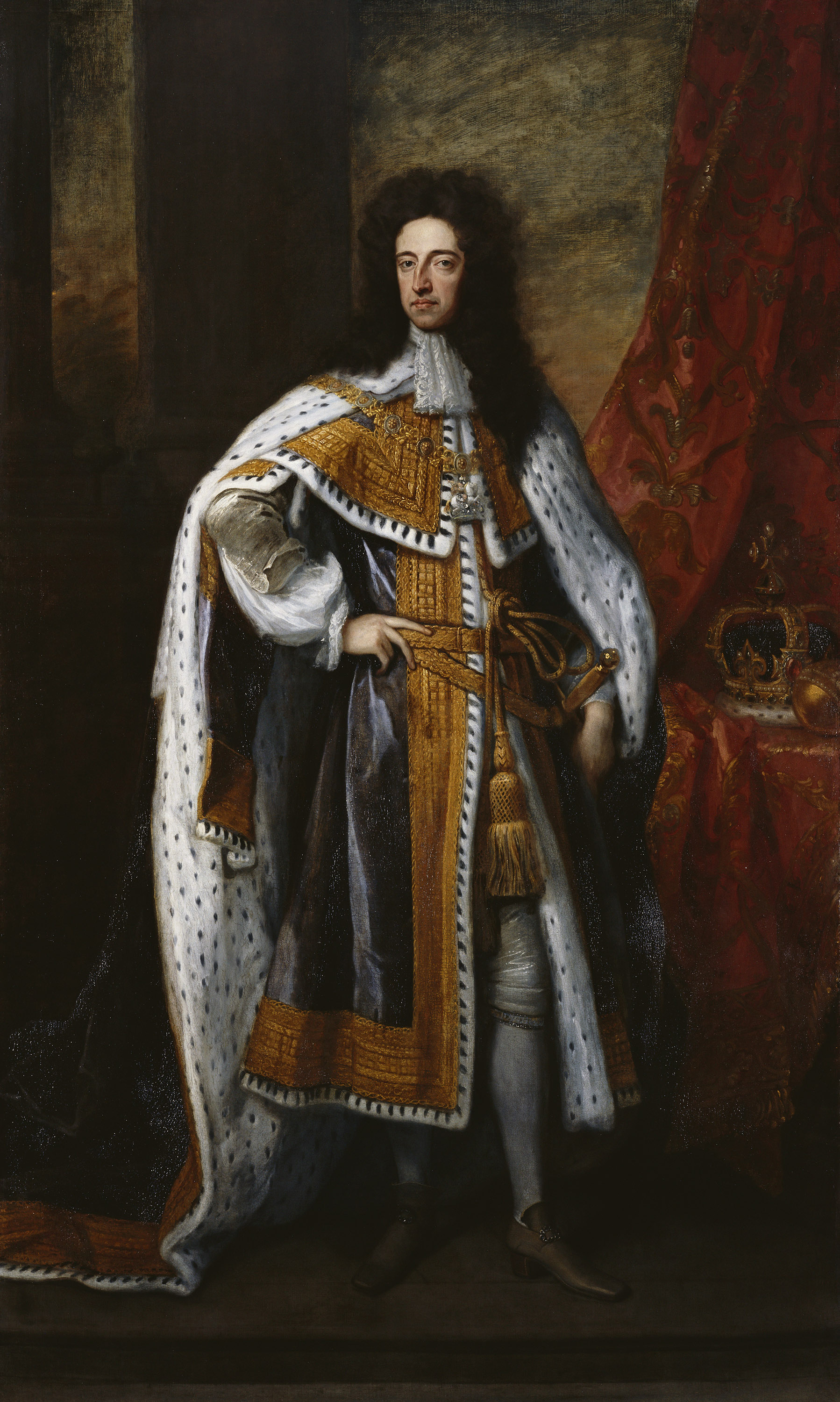
King William III
After the death of Queen Mary in December 1694, King William was entitled to exercise the royal authority alone under the terms of the Bill of Rights, the legislation that was put in place by the English Parliament in December 1689.
In line with the usual practice on the death of a sovereign, the Queen’s demise saw changes being made to the royal emblems, as her name and portrait were omitted when a new great seal was commissioned, and her effigy and cypher disappeared from the coinage.
The King did not alter his basic approach to managing his British and Dutch interests after his wife’s death, and he continued to spend most of the summer and the early autumn in Holland. The question was what to do about the Crown’s role as the fountain of justice and honour, as well as supervising the other royal powers while he was overseas, as that job could no longer be delegated to the Queen.
William had no children, and rather than pass control to another member of the royal family, such as his sister-in-law, Princess Anne of Denmark, it was decided that the authority should be vested in a small group of the King’s counsellors.

Lords justices
The new arrangement was put in place a few months after the Queen’s death, and began in May 1695 when the King advised Parliament that he needed to go abroad and would take care to place the administration of affairs “in such persons, on whose care and fidelity I can entirely depend; and I doubt not, my lords and gentlemen, but every one of you, in your several stations, will be assisting to them ... and that you will be more than ordinarily vigilant in preserving the public peace” (Gazette issue 3076).
On the same day William advised the Privy Council that he had appointed seven individuals “to be lords justices of England, for the administration of the government during His Majesty’s absence.” The justices were all privy counsellors, and comprised the archbishop of Canterbury and the holders of six senior offices of state (lord keeper of the great seal, lord privy seal, lord steward, secretary of state, lord chamberlain, and first commissioner of the Treasury), who were all familiar with the work of the government in London.
The Gazette did not indicate what limits were placed on their powers, and no announcement was made about the situation in Scotland or Ireland. In practice, the government of each of the three kingdoms proceeded much as usual while William was away, and a similar system of delegation was established before the King left for Holland in each of the five years from 1696 to 1700, with the justices being left to deal with matters of state.
It is notable that the King adopted a different approach in dealing with the affairs of the Order of the Garter where, in line with long-standing precedent, a few of the current knights were nominated to manage some of the order’s activities on the sovereign’s behalf. This feature of the Garter’s corporate life was illustrated in July 1696 when William was in Flanders with the allied army, and three of the companions were authorised to install the King’s seven-year-old nephew William, Duke of Gloucester, in St George’s Chapel (Gazette issue 3204).
The young Duke of Gloucester was the likely heir to the Crown, next after his mother (Princess Anne), but he died in July 1700 while his uncle was in Holland. William did not return for his nephew’s funeral, but instead arrived at Kensington in mid-October, by which point it was clear that the prince’s death had altered the succession to the throne.

Act of Settlement
King William’s next absence coincided with two notable developments that affected the destination of the Crown, as shortly before he embarked on the royal yacht William and Mary to leave for the Continent The Gazette reported that assent was given to “An act for the further limitation of the Crown; and better securing the rights and liberties of the subjects” on 12 June 1701 (Gazette issue 3714), a statute that is now known as the Act of Settlement.
This legislation regulated the destination of the crowns of England, France and Ireland in the light of the death of the Duke of Gloucester. The act referred to the person who would “inherit, possess and enjoy” the “crown and government of this realm”, and acknowledged that they would be able to exercise “any regal power, authority, or jurisdiction”. It was declared that:
“Princess Sophia, electress and dutchess dowager of Hanover, daughter of the most excellent princess Elizabeth, late Queen of Bohemia, daughter of our late sovereign King James the First ... be and is hereby declared to be the next in succession, in the Protestant line, to the imperial Crown and dignity of the said realms of England, France, and Ireland, with the dominions and territories thereunto belonging, after His Majesty, and the Princess Anne of Denmark, and in default of issue of the said Princess Anne, and of His Majesty respectively.”
The act allowed for all “honours, stiles, titles, regalities, prerogatives, powers, jurisdictions and authorities” to pass to Princess Sophia “and the heirs of her body, being Protestants”, and so it was the Act of Settlement from 1701, rather than any proceedings at an accession council, that provided the starting point for determining who was legally entitled to wear the crown.
The Hanoverian settlement was marked by the grant of royal favours, and The Gazette reported the proceedings at Kensington Palace in June 1701 at which Princess Sophia’s son “His Electoral Highness of Hanover” – the future King George I – was admitted to the Garter (Gazette issue 3715).
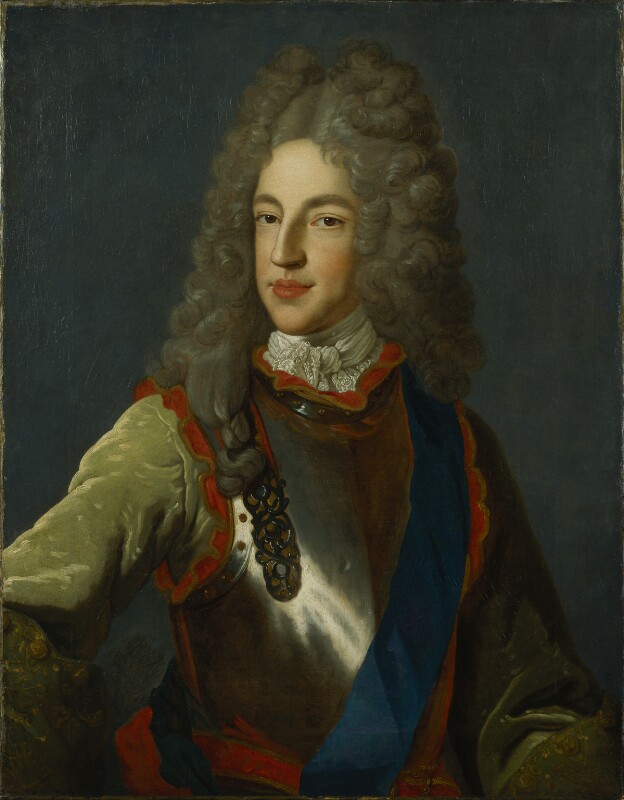
The Old Pretender
The second event of 1701 that was of national significance that occurred while William was outside the realm became a factor that contributed to war between England and France, for while the King was in Holland entertaining the Duke of Zelle and the Electoral Prince of Hanover and hunting stags, The Gazette noticed that his father-in-law had died.
The Gazette explained that on “being informed, that the French King has, upon the death of the late King James II of England and VII of Scotland, declared the Pretended Prince of Wales king of England, Scotland and Ireland ... [William] thought fit to send orders to the Earl of Manchester, his ambassador in France, to return immediately to England, without taking any leave of that court” (Gazette issue 3742).
William came back to London and addressed the House of Lords in November 1701 at the start of a crisis that would engage The Gazette’s readers for many years, when he lamented the French king’s conduct in recognising James’s son as king of England, as well as placing his (King Louis) grandson on the Spanish throne.
The English Parliament was alive to the threat from France and discussed the means for “securing the succession of the Crown in the Protestant line, and extinguishing the hopes of all pretenders, and their open or secret abettors.” In March 1702 King William saw an act being passed “for the attainder of the Pretended Prince of Wales of high treason” (Gazette issue 3789), but he had died by the time that war was declared against France in May 1702 (Gazette issue 3807).
About the author
Russell Malloch is a member of the Orders and Medals Research Society and an authority on British honours.
Let us know what you think of this article by getting in touch. All feedback is welcome.
See also
Gazette Firsts: The history of The Gazette and royal coronations
This month in history: Edward VIII abdication crisis
Images (in order of appearance)
The Gazette
Getty Images
Noonans of Mayfair
Royal Arms of England (1694-1702)
Getty Images
Royal Collection Trust/© Her Majesty Queen Elizabeth II 2022
Royal Collection Trust/© Her Majesty Queen Elizabeth II 2022
Royal Collection Trust/© Her Majesty Queen Elizabeth II 2022
© National Portrait Gallery, London
Publication date: 6 July 2022
Any opinion expressed in this article is that of the author and the author alone, and does not necessarily represent that of The Gazette.
